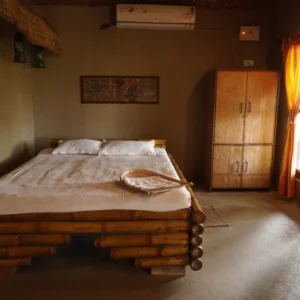Your home is more than just a structure—it’s your sanctuary, a place where you and your family feel safe. However, the safety and longevity of your home heavily depend on its foundation. For homes built on slab foundations, even minor issues can escalate into serious safety hazards. Understanding how slab foundation problems impact your home and knowing how to address them with professional help like slab foundation repair from All in 1 Foundation is crucial for every homeowner.
What Is a Slab Foundation?
A slab foundation is a flat, concrete base poured directly onto the ground, often reinforced with steel to provide stability. It’s a popular choice for many homes because it’s cost-effective and quicker to construct than other foundation types, such as basements or crawl spaces. However, while slab foundations offer simplicity and durability, they are not immune to problems caused by shifting soil, water damage, or poor construction practices.
Common Slab Foundation Issues
1. Cracks in the Concrete
Cracks are one of the most visible signs of slab foundation issues. While hairline cracks may seem harmless, larger or widening cracks indicate movement in the foundation. This can result from soil settlement, shrinkage, or uneven load distribution. Over time, these cracks can compromise structural integrity and pose safety risks.
2. Uneven or Sloping Floors
If you notice that your floors are tilting or uneven, it’s often a sign that your slab foundation is shifting. Uneven floors can lead to doors and windows sticking or not closing properly, creating potential hazards inside your home. Uneven weight distribution can also strain walls and support beams, increasing the risk of structural damage.
3. Water Damage and Flooding
Poor drainage or plumbing leaks can cause water to pool around or beneath your slab foundation. Excess moisture can weaken concrete, erode supporting soil, and lead to foundation sinking or settling. Water intrusion may also contribute to mold growth, posing health risks for residents.
4. Separation of Walls and Fixtures
When a slab foundation shifts, you might notice gaps forming between walls, baseboards, or cabinets. These gaps indicate structural movement, which, if left unaddressed, can worsen over time. Such separation not only damages your home aesthetically but can also compromise its stability.
How Slab Foundation Problems Affect Your Home’s Safety
Slab foundation issues are more than just a cosmetic concern—they directly impact your home’s structural integrity. Here’s how they can affect safety:
-
Structural Weakness: Cracks, sinking, and uneven slabs can compromise load-bearing walls, leading to potential collapse in extreme cases.
-
Trip Hazards: Uneven floors increase the risk of slips, trips, and falls, especially for children and elderly residents.
-
Water Intrusion: Moisture entering your home through foundation gaps can damage electrical systems, flooring, and furniture, creating hazards.
-
Pest Infestations: Gaps in your foundation can allow pests such as termites or rodents to enter, posing both health and structural risks.
Preventing and Addressing Slab Foundation Issues
The best way to protect your home is early detection and timely repair. Here’s what homeowners should do:
1. Regular Inspections
Routine inspections can help you catch early signs of foundation damage. Look for cracks, uneven floors, water stains, or gaps around fixtures. If you notice these warning signs, consult a professional immediately.
2. Professional Slab Foundation Repair
DIY fixes are rarely effective when it comes to foundation problems. Certified professionals from All in 1 Foundation have the expertise to evaluate, repair, and reinforce your slab foundation. Common repair techniques include:
-
Underpinning: Stabilizing the foundation by extending its base to stronger soil layers.
-
Mudjacking: Lifting and leveling sunken slabs using a cement slurry.
-
Piering: Installing steel piers beneath the foundation to restore stability and prevent further sinking.
3. Proper Drainage and Maintenance
Maintaining proper drainage around your home can prevent soil erosion and water damage. Ensure gutters and downspouts direct water away from your foundation, and fix any leaks in plumbing or irrigation systems promptly.
4. Soil Stabilization
In some cases, unstable soil beneath your foundation may require professional treatment to improve load-bearing capacity. Experts can assess soil conditions and implement solutions to prevent future foundation movement.
Why Choose All in 1 Foundation?
When it comes to protecting your home, experience and reliability matter. All in 1 Foundation specializes in comprehensive slab foundation repair, offering solutions tailored to your home’s specific needs. Their team uses state-of-the-art techniques to address foundation issues efficiently and safely, ensuring your home remains stable and secure for years to come.
-
Expert Evaluation: Accurate diagnosis of foundation problems.
-
Customized Solutions: Repairs designed for your home’s unique structure and soil conditions.
-
Long-Term Protection: Prevents future foundation movement and costly repairs.
Conclusion
Slab foundation issues may start small, but if left unattended, they can severely compromise your home’s safety and value. Recognizing the signs early and acting promptly with professional slab foundation repair services from All in 1 Foundation ensures your home remains a safe and comfortable environment. Remember, protecting your foundation is protecting your home, your investment, and your family’s well-being.








